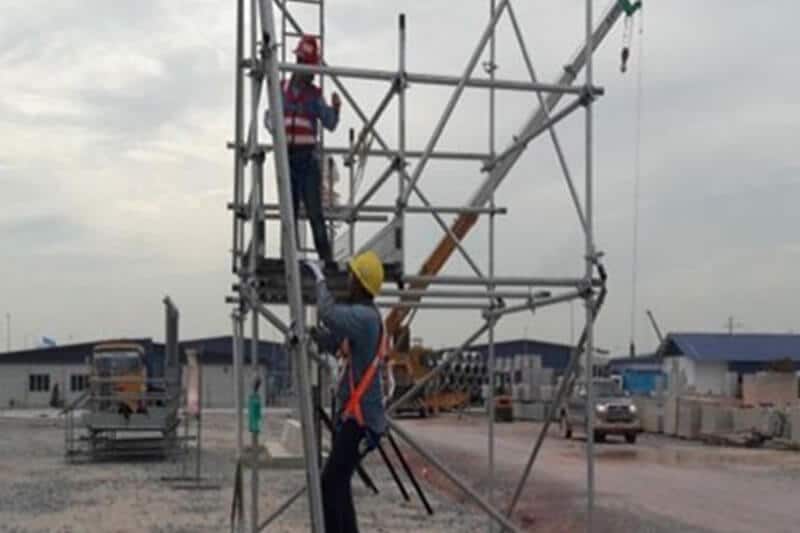Scaffold or gallows?
Sustained high performance is achieved by whole-hearted engagement, commitment to improvement, and demonstrated encouragement, reinforcement and empowerment of our people and teams.



Sustained high performance is achieved by whole-hearted engagement, commitment to improvement, and demonstrated encouragement, reinforcement and empowerment of our people and teams.
Three years ago this month, I wrote this blog. Today, despite the immediacy of the COVID-19 situation, I am re-publishing as I believe it is worthy of review. Many of us are studying and practicing human performance. This article reflects the value of human performance principles:
| We all make mistakes. Behavior is a symptom not a cause. | People are not the problem, they are the solution |
| Major and minor incidents are preventable. We can predict, prevent and manage error-likely situations. | The path and process to high performance is also predictable, and can be led and managed |
| The organization, its leaders and our peers have the greatest influence on our work and the potential for incident-free performance | Sustained high performance is achieved by whole-hearted engagement, commitment to improvement, and demonstrated encouragement, reinforcement and empowerment of our people and teams. |
Recently a worker fell from a 4.8-meter-high scaffold located just outside a process plant. He and two colleagues equipped with harnesses and prepped with a Tool Box Talk (TBT) set out to dismantle the scaffolding in fair weather. Despite being tied off, one man fell to the ground and suffered serious injuries. Fortunately, he did not die.
The investigation was thorough and turned-up a number of shortcomings, including:
Given the findings, senior management is recommending negative consequences for some managers and supervisors, including loss of performance bonuses. These will clearly be perceived as blame and punishment by many people throughout the organization.
However, some managers recognize that “blame stops learning”. To their credit, they are at work behind closed doors trying to convince their colleagues to forego the “punishment” in service of organizational learning. Those managers, and many of us reading this blog, understand that punishing people for honest mistakes at work doesn’t make sense. People don’t set out to get hurt, they want to get the job done. The outcome of those closed-door conversations is unclear.
The findings also point to improvements to be made. I believe the organization will do a good job correcting the conflicting directions for the workers and revising the procedure mentioned above, but I don’t think those steps will make a fundamental difference in the safety of scaffolding activity in the future.
Scaffolding may be one of the most prevalent of all construction activities. Outside of manufacturing-type environments, scaffolding is manually erected and dismantled almost 100% of the time. Work at heights is one of the most frequent killers among hazardous activities – why aren’t we using our brains to tame this hazard?
Said differently, worker attention, PPE and compliance with procedures are the weakest protections against injury. But these were the ONLY safeguards available to those three men. And to literally hundreds of thousands of workers like them erecting and taking down scaffolding on construction work sites every day.
For a fatal risk, shouldn’t more significant safeguards be in place, such as removal of the hazard or a firm physical barrier? In this particular case, existing motorized or rolling lifts could not get to the outdoor location. But that is true of the vast majority of scaffolding done on the site and it is true of most of the sites I work on and visit. Relying on workers to overcome a fatal risk, then blaming them and their supervisors is a failure of management and leadership.
It has been proven again and again that higher levels of safeguards cost an organization LESS not more. But who pays the bill upfront for these safeguards? For a small sub-contractor, as in this case, engineered approaches are usually too expensive.
But you know what? This site operator spends many hundreds of thousands of dollars every year on scaffolding activities performed by multiple contractors. In the last few years, this company took many thousands of dollars of cost-savings out of their sub-contracts. And it is proud of that. Are short term cost-savings the right perspective? What are accidents costing this operation? Many good managers say the right thing, “Good safety makes for good business”, but how are we actually implementing and leading that cause?
JMJ suggested that perhaps there was a bigger opportunity here. Rather than just reinforcing the rules, what might provide a better overall outcome?
Safety leadership can be boiled down to:
What brings life to safety in a catalytic way is innovation, inspiration, direction-setting. These are actions and practices a leader can take. These are practices that transcend and in fact preclude the need to punish mistakes or provide positive incentives for behaviors. They catalyze people’s best efforts.
Safety is not the absence of harm and mistakes. It is the addition of safeguards, practices and intangible elements that cause excellence in operations.
For just a few moments, imagine that scaffold. Shift your personal perspective for a few moments. Think of your son or daughter five meters up in the air doing thousands of hours, hundreds of days per year of repetitive tasks, and relying only on their own efforts to prevent a fall.
Maybe it’s time for some creative thinking, engaging scaffolders, their supervisors and engineers for their ideas, and perhaps applying investment enterprise-wide that will pay off for them and for your operation for many years to come.
A scaffold or gallows?